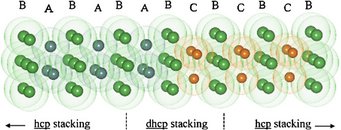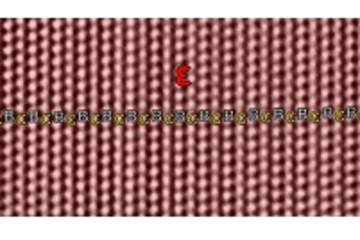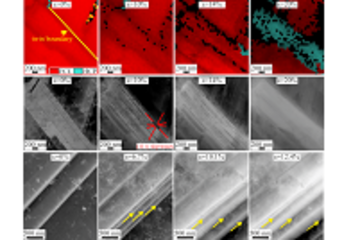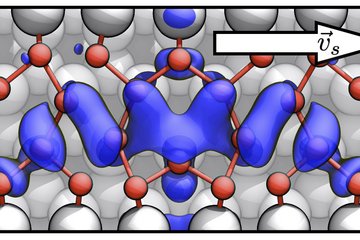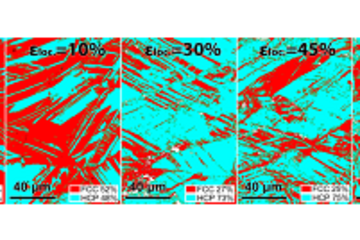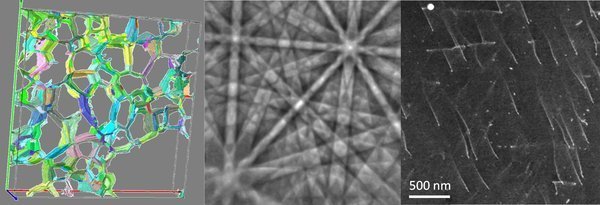
Ductility and stacking fault energies in Mg and Mg–Y alloys
In this project we study - together with the department of Prof. Neugebauer and Dr. Sandlöbes at RWTH Aachen - the underlying mechanisms that are responsible for the improved room-temperature ductility in Mg–Y alloys compared to pure Mg.

Schematical drawing of the I1 stacking fault characterized by a short double hcp (dhcp) ABCB stacking sequence separating two hcp sequences ABABAB (on the far left, green: atoms in B layers and yellow: atoms in A layers) BCBCBC (on the far right, green: atoms in B layers and orange: atoms in C layers); hcp: hexagonal close-packed structure; dhcp: double hexagonal close-packed structure. The transparent envelopes around the cores have van der Waals radii; overlapping of two envelopes indicates atomic bonding.
The underlying effects are investigated by using a combined ICME strategy including transmission electron microscopy and density functional theory. Both methods show a significant decrease in the intrinsic stacking fault I1 energy (I1 SFE) with the addition of Y. The influence of the SFE on the relative activation of different competing deformation mechanisms (basal, prismatic, pyramidal slip) is studied in detail. From this analysis we suggest a key mechanism which explains the transition from primary basal slip in hexagonal close-packed Mg to basal plus pyramidal slip in solid solution Mg–Y alloys.
This mechanism is characterized by enhanced nucleation of c + a dislocations where the intrinsic stacking fault I1 (ISF1) acts as heterogeneous source for c + a dislocations. Possible electronic and geometric reasons for the modification of the SFE by substitutional Y atoms are identified and systematically discussed.
